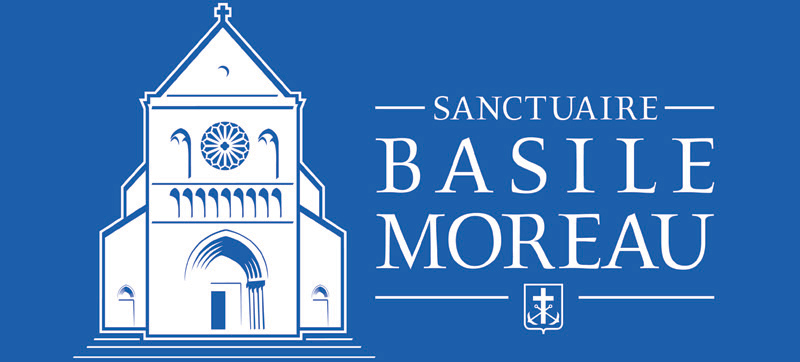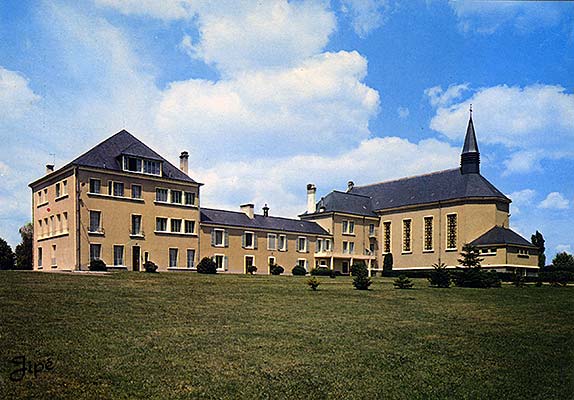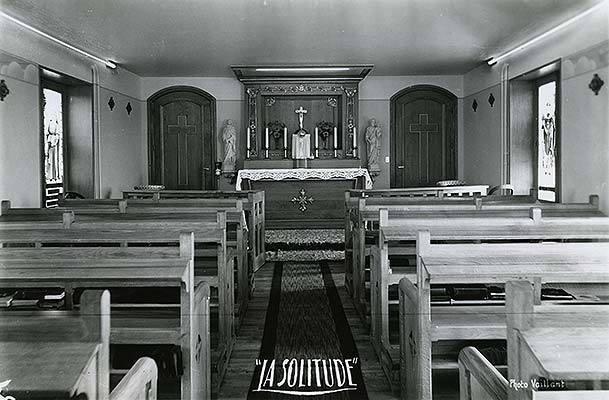Solitude of the Savior
Acquired by Father Moreau to serve as a novitiate for his priests, Father Founder intended that the Solitude of the Savior be a perfect imitation of the Sulpician Solitude of Issy. The property, known as Châteauneuf and as Vaugontier, located on the hill of Gazonfier, was, in Moreau’s time, quite isolated and thus lent itself to prayer and recollection. In the interior wall of the vestibule was inscribed, as at Issy: “O beata Solitudo ! O sola Beatitudo! Intrate toti, manete soli, exite allii.” (Oh blessed Solitude! Oh singular Beatitude! Enter-in completely, dwell therein alone, emerge a different person.”)
The novitiate was opened on October 18, 1840 (feast of St. Luke the Evangelist) in the presence of Bishop Bouvier, who came to bless the chapel.
A place of solitude
Father Moreau often walked in the “Little Woods,” which exist to this day, and where, it is said, he revised and edited the Constitutions and Rules of his Congregation. At the entry to these woods, Father Moreau placed a statue of Our Lady of the Solitude: “And Mary kept all these things, reflecting on them in her heart” (Luke 2:19).
Father Moreau took up residence for a time at the Solitude, serving as Master of Novices. Otherwise, when residing at Sainte-Croix, he would often walk up the hill to the Novitiate in search of calm and peace:
“There…far from the noise of the world, he found it easier to heed the affectionate promptings of his heart for his dear sons and daughters in Jesus Christ, and to put into words the inspirations and exhortations which he felt so strongly impelled to pass on to them” (Catta, vol II, 221).
The Solitude today
The Solitude of the Savior was sold, along with the church and collège, in October of 1869. It was purchased by M. Lefèvre.
In possession of the Marianites of Holy Cross since 1947, the Solitude of the Savior has undergone significant renovation and expansion since Moreau’s day. A large chapel was dedicated in 1955. A retirement facility and an administration building were also added.
The original Solitude, which can still be visited today, is the lower, central building topped with the very bell that dates to the time of Father Moreau. The small chapel (since renovated) contains the altar (since restored) on which Father Moreau celebrated Mass.
On the second floor of the Solitude one can see the room the Father Founder once occupied. A small room the same as the others, it has since been restored to the state it would have appeared in his day. The tile floor is that on which he walked. A bed and a nightstand, while not his, are from the era. There is a little shelf on which he would have arranged his books. The doorknob, according to tradition, dates to the Founder’s time.
At the Solitude of the Savior, one can visit archives, as well as a museum which preserves some of the artifacts that once belonged to Father Moreau (including vestments, sacred vessels, personal possessions, and the chair in which he slept for many years). These items, acquired by the Marianites at the time of the property sale in 1869 and lovingly displayed in their museum, testify to the constant fidelity and devotion of the Marianites to their Father Founder and to their heartfelt desire that he be known and venerated in the family of Holy Cross and beyond.
Portions taken from Basil Anthony Mary Moreau, by Canon Étienne Catta and Tony Catta (English translation by Edward L. Heston, C.S.C.), and from The Very Reverend Father Basil Anthony Moreau and his works, by Abbé Charles Moreau.




